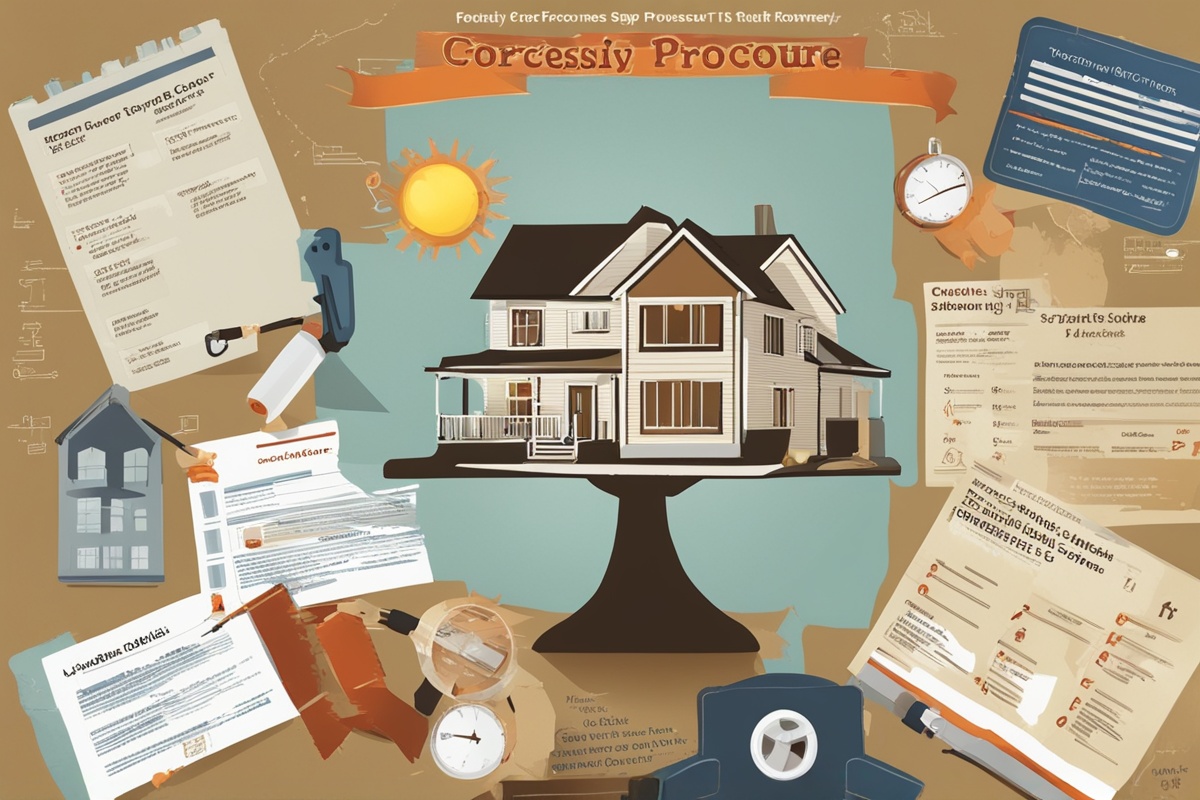Navigating the complex world of property foreclosure and seizure can be daunting for both professionals and individuals involved in the process. Having the right resources at your disposal is crucial, and among the most valuable are Essential Property Seizure Guides. These guides, often presented as detailed checklists, serve as indispensable tools under the broader umbrella of foreclosure tools. They help streamline the process, ensure compliance with legal requirements, and minimize errors during property seizure. In this post, we’ll explore how checklists play a pivotal role in property seizure and provide actionable insights to help you stay organized and prepared.
Why Essential Property Seizure Guides Are Critical in Foreclosure
Property seizure is a critical step in the foreclosure process, often involving legal, financial, and logistical challenges. Essential Property Seizure Guides, typically in the form of checklists, act as a roadmap to ensure that every necessary action is taken. These guides are designed to help lenders, legal professionals, and property managers avoid costly mistakes, such as missing critical deadlines or failing to notify stakeholders. By incorporating these checklists into your foreclosure toolkit, you can maintain efficiency and adhere to local regulations, ultimately protecting your interests during property seizure.
The Role of Checklists in Streamlining Property Seizure
Checklists are a cornerstone of effective foreclosure tools, especially when dealing with property seizure. They break down complex processes into manageable steps, ensuring that nothing is overlooked. Essential Property Seizure Guides often include tasks such as verifying ownership records, scheduling inspections, and preparing legal documentation. For example, a checklist might remind you to secure the property after seizure to prevent vandalism or unauthorized access. By following these structured guides, you can save time, reduce stress, and focus on the bigger picture of foreclosure management. To explore more about organizing foreclosure processes, check out our post on Property Management Tips for Foreclosure.
Key Components of Essential Property Seizure Guides
A well-crafted property seizure checklist is comprehensive and tailored to the specific needs of foreclosure. Here are some key components typically found in Essential Property Seizure Guides:
- Legal Compliance: Ensuring all actions align with state and federal foreclosure laws.
- Property Assessment: Documenting the condition of the property before and after seizure.
- Notification Requirements: Informing borrowers, tenants, and other stakeholders as required by law.
- Asset Protection: Securing the property to prevent damage or theft.
- Documentation: Keeping detailed records of every step for legal and financial purposes.
These components ensure that the seizure process is thorough and defensible in case of disputes. For additional resources on legal compliance, refer to our guide on Legal Foreclosure Checklist.
How to Create Your Own Property Seizure Checklist
While pre-made Essential Property Seizure Guides are widely available, creating a customized checklist can be incredibly beneficial, especially if you deal with unique property types or local regulations. Start by researching the specific foreclosure laws in your area to ensure compliance. Next, list out every step of the seizure process, from initial notices to final property transfer. Include timelines, responsible parties, and required documentation for each task. Finally, test your checklist in a real-world scenario and refine it based on feedback. For tips on managing timelines, see our article on Foreclosure Timeline Management.
Common Pitfalls to Avoid During Property Seizure
Even with the best Essential Property Seizure Guides, mistakes can happen if you’re not vigilant. One common pitfall is failing to communicate with tenants or borrowers, which can lead to legal challenges. Another is neglecting to secure the property immediately after seizure, risking damage or liability. Additionally, incomplete documentation can jeopardize the entire process, especially if disputes arise. By using a detailed checklist, you can avoid these issues and maintain control over the foreclosure process. Learn more about avoiding mistakes in our post on Common Foreclosure Errors to Avoid.
Where to Find Reliable Essential Property Seizure Guides
Finding trustworthy resources for property seizure checklists is essential for success in foreclosure. Many government websites, legal aid organizations, and industry associations offer free or affordable guides tailored to specific regions or property types. Additionally, professional foreclosure tools platforms provide downloadable checklists and templates that can be customized to your needs. Always ensure that the source of your guide is reputable and up-to-date with current laws. For a curated list of resources, check out our page on Foreclosure Resource Directory.
Disclaimer: The information provided in this post is for general informational purposes only and should not be considered legal or financial advice. Property seizure and foreclosure laws vary widely by jurisdiction, and it is recommended that you consult with a qualified attorney or professional before taking any actions related to property seizure. We are not responsible for any errors, omissions, or outcomes resulting from the use of the information or checklists discussed in this article.
References
- U.S. Department of Housing and Urban Development – Foreclosure Resources
- Consumer Financial Protection Bureau – What is a Foreclosure?
- Nolo – Foreclosure Laws by State
- FDIC – Foreclosure Prevention Resources
- American Bar Association – Foreclosure Process Overview
This content is for informational purposes only and not a substitute for professional advice.



